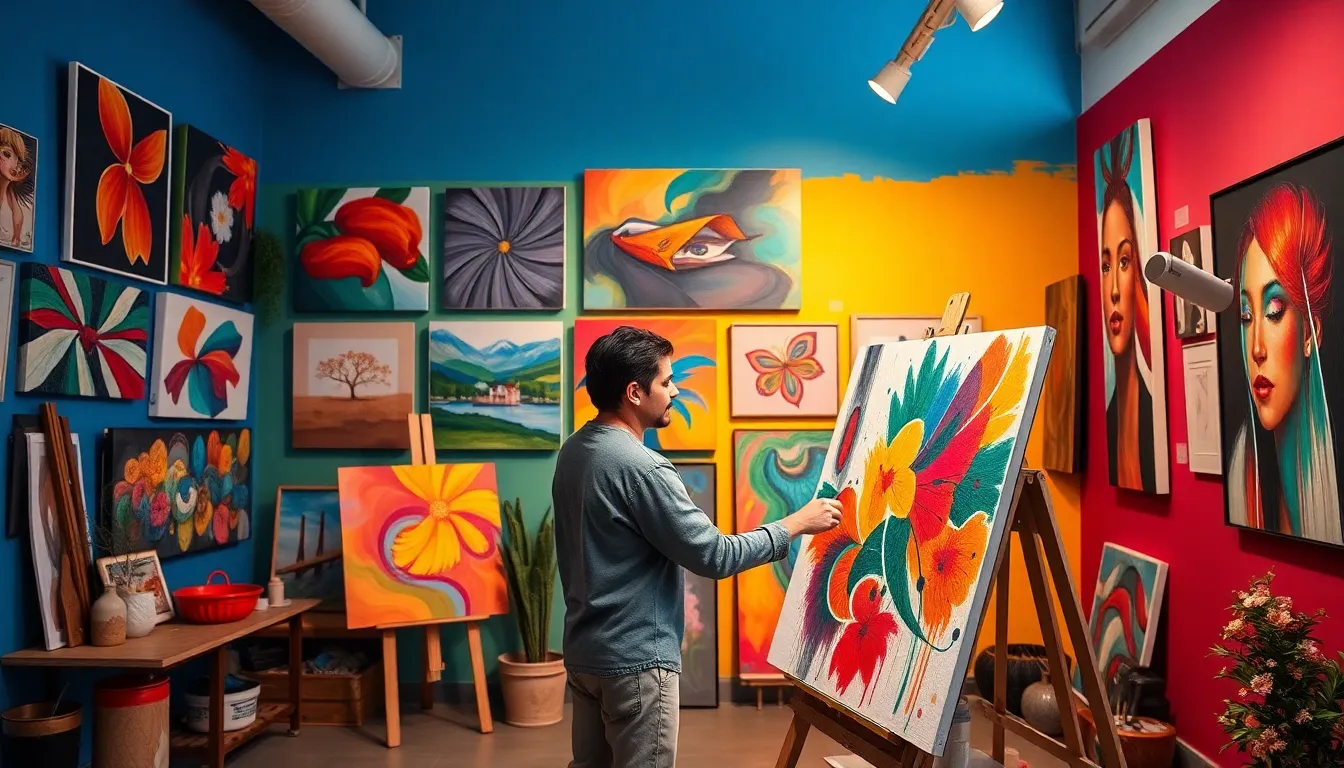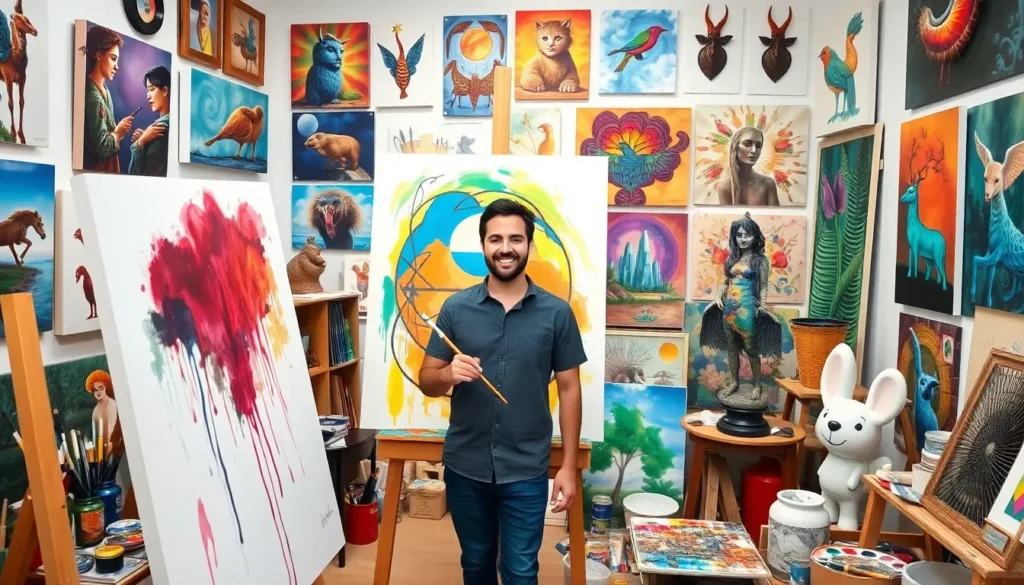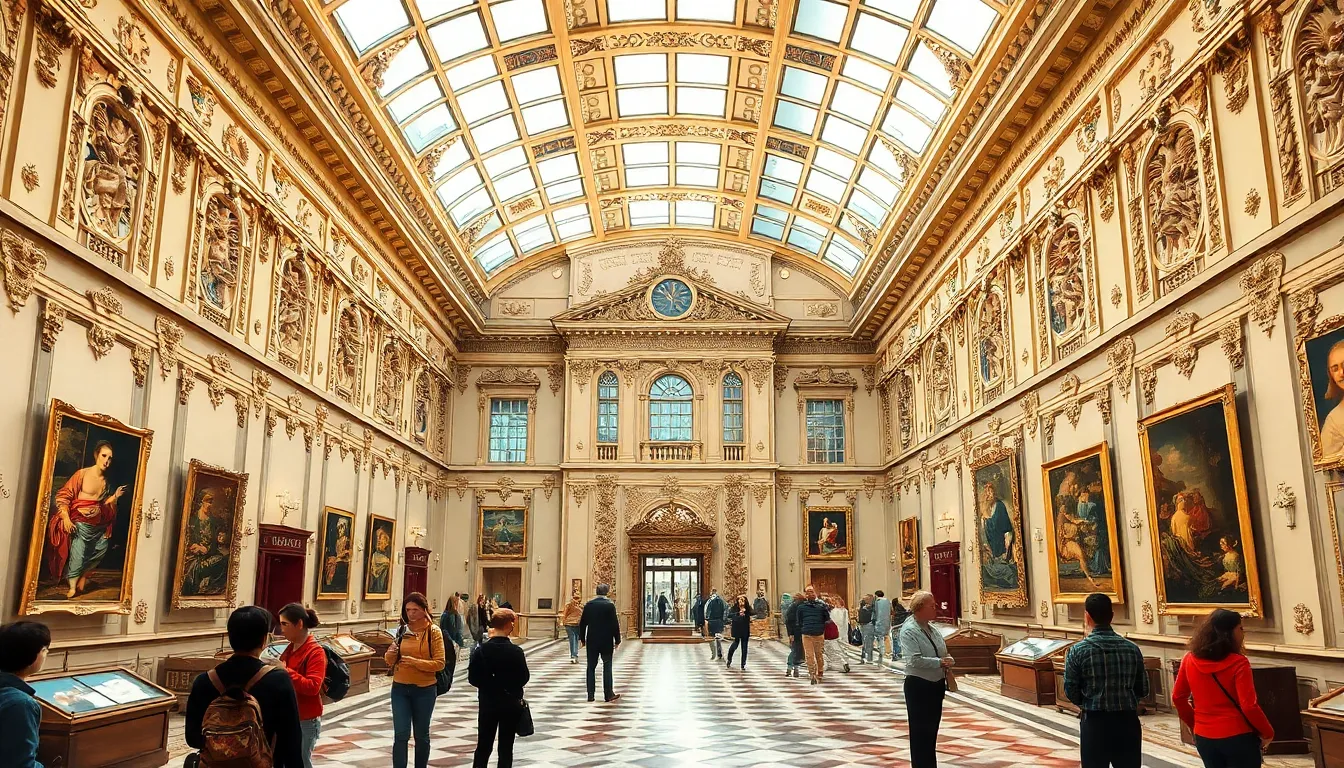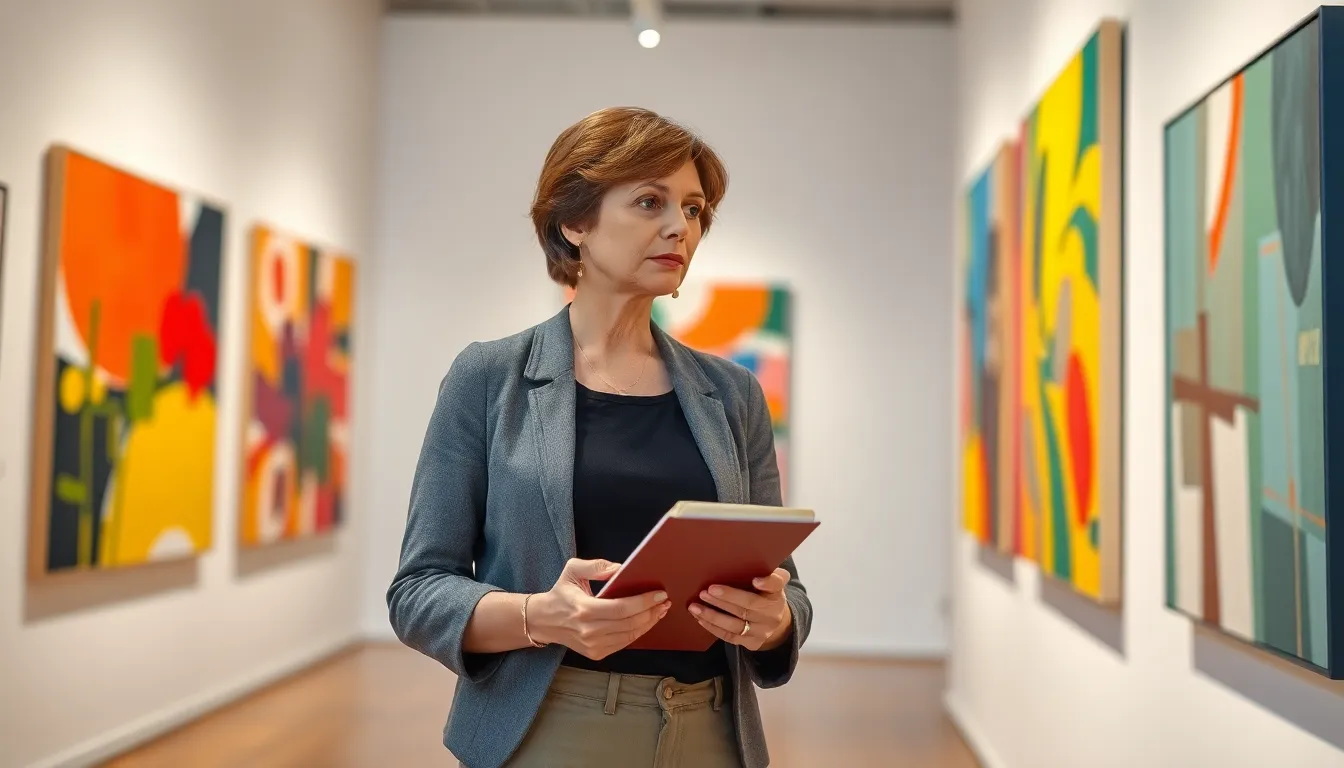Table of Contents
ToggleIn a world overflowing with mass-produced prints and cookie-cutter decor, original art stands out like a unicorn at a dog park. It’s not just a pretty picture; it’s a conversation starter, a mood lifter, and a unique slice of creativity that can transform any space. Who wouldn’t want to own a piece that’s as one-of-a-kind as their morning coffee routine?
Investing in original art isn’t just about aesthetics; it’s about making a statement. Each brushstroke tells a story, and every canvas captures a moment in time. Whether it’s a bold abstract piece or a whimsical portrait, original art brings personality to walls and sparks joy in everyday life. So why settle for ordinary when you can embrace the extraordinary? Dive into the vibrant world of original art and discover how it can elevate your surroundings and inspire your spirit.
What Is Original Art?
Original art refers to unique creations crafted by artists without replication. Each piece reflects the artist’s individual style, vision, and emotion. Artwork in this category encompasses various mediums, including painting, sculpture, photography, and mixed media. Collectors often seek pieces that offer a distinct narrative and visual impact.
Artists create original works as expressions of their thoughts and experiences. This authenticity contributes to the piece’s value and significance, distinguishing it from mass-produced items. When someone purchases original art, they invest in a singular experience that resonates personally.
Original artworks often feature unique techniques and materials. Artists experiment with different approaches, leading to one-of-a-kind results. This experimentation adds depth and dimension to each creation, enhancing its allure.
Buying original art supports artist communities and fosters creativity. Collectors play a vital role in sustaining the art ecosystem, allowing artists to thrive. Investing in original work encourages continuous artistic expression and innovation.
Displaying original art can transform a space. It draws attention and inspires conversation, allowing viewers to connect with the artist’s intention. Each piece conveys a different story, making homes or offices feel more personal and inviting.
Ultimately, original art serves as both an aesthetic enhancement and a meaningful investment. Its unique nature and ability to uplift environments provide immeasurable worth to any collection. Embracing original art contributes to the appreciation of creativity and cultural dialogue in society.
Importance Of Original Art

Original art holds significant importance in the world of creativity and culture. Its value extends beyond aesthetics, playing a vital role in personal expression and investment.
Unique Expression
Original art showcases the distinctive vision of an artist, offering personal insight and emotion. Each piece represents a journey, reflecting the creator’s unique experiences and thoughts. Artists utilize various mediums, such as painting and sculpture, to portray their individual styles effectively. The result is a diverse array of artworks filled with meaning that cannot be replicated. Collectors often find themselves drawn to these pieces due to the personal connection they foster. Viewing original art can also inspire creativity, encouraging individuals to understand their own perspectives and embrace diversity in artistic expression.
Investment Value
Investing in original art presents numerous financial benefits alongside emotional value. Unlike mass-produced decor, original pieces often appreciate over time, making them a valuable asset. Market trends reveal that unique artworks can grow in value, providing both aesthetic pleasure and financial security. Collectors often enjoy the thrill of discovering emerging artists whose works promise future appreciation. Supporting artists also enriches the community, fostering creativity and encouraging new talent. Original art transforms spaces while contributing meaningfully to cultural dialogue, ensuring its place as a worthwhile investment.
Types Of Original Art
Original art encompasses various forms that highlight an artist’s unique expression. Each type invites appreciation and reflects distinct techniques.
Paintings
Paintings represent one of the most celebrated forms of original art. Artists utilize mediums like oil, acrylic, and watercolor to create visual narratives on canvas or other surfaces. Each painting conveys a message through color, texture, and brushwork, allowing viewers to interpret the artist’s emotion. Many styles exist within paintings, including abstract, realism, and impressionism, making it easy to find a piece that resonates personally. Investing in a painting often enhances a space, adding depth and character while serving as a focal point.
Sculptures
Sculptures provide a three-dimensional dimension to original art. Artists often craft sculptures using materials such as clay, metal, wood, and stone. Each sculpture tells a tactile story, engaging viewers from multiple angles and perspectives. Various styles exist, ranging from classical to contemporary, inviting personal interpretation. Sculptures can either stand alone in public spaces or complement interior designs. Owning a sculpture often creates a lasting impression, sparking conversations and reflecting the owner’s aesthetic choices.
Mixed Media
Mixed media art combines different materials and techniques to create visually complex pieces. Artists may use paint, fabric, paper, and found objects, intertwining various elements into cohesive works. Each mixed media piece showcases the artist’s creativity and experimentation, often resulting in rich textures and layers. These artworks challenge traditional boundaries, leading to unique interpretations and interactions. Collecting mixed media art often transforms spaces, encouraging viewers to explore and engage with each layer and element present.
How To Identify Original Art
Identifying original art involves careful scrutiny and knowledge of key elements. Buyers must recognize certain features that signify authenticity and value.
Art Authentication
Art authentication encompasses various methods to confirm originality. Certified appraisers utilize techniques like pigment analysis and ultraviolet light to inspect artwork. Experts may also examine signatures and inscriptions for consistency with the artist’s known works. Seeking documentation from galleries or reputable sources can further enhance credibility. Prioritizing transparent records contributes to a better understanding of a piece’s background.
The Role Of Provenance
Provenance plays a significant role in establishing an artwork’s historical background. Detailed records trace an artwork’s ownership and exhibition history, offering insights into its significance. Notable previous owners or exhibitions can elevate a piece’s market value. Collectors consider provenance vital in assessing the legitimacy of art. Genuine documentation provides a transparent narrative that links the artwork to its creator. Understanding provenance reassures buyers about an art piece’s authenticity, ensuring informed investment decisions.
Embracing original art enriches both personal spaces and cultural landscapes. Each unique piece not only enhances the aesthetic appeal of a home but also fosters a deeper connection to creativity and expression. Collectors and art enthusiasts alike find joy in supporting artists and discovering new talents, making original art a rewarding pursuit.
Investing in original works offers financial benefits as well, with many pieces appreciating over time. By choosing original art, individuals contribute to a vibrant artistic community while surrounding themselves with meaningful narratives. This journey into the world of original art transforms not just spaces but also perspectives, inviting inspiration and dialogue into everyday life.



